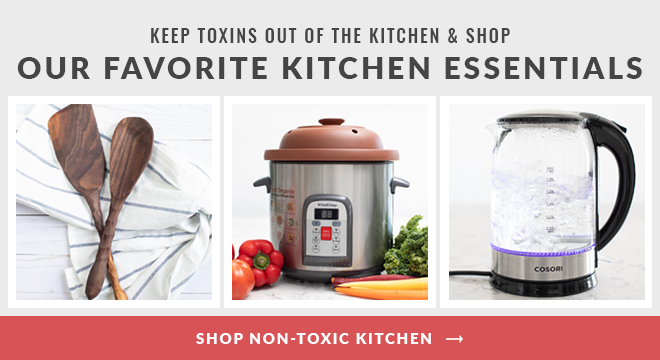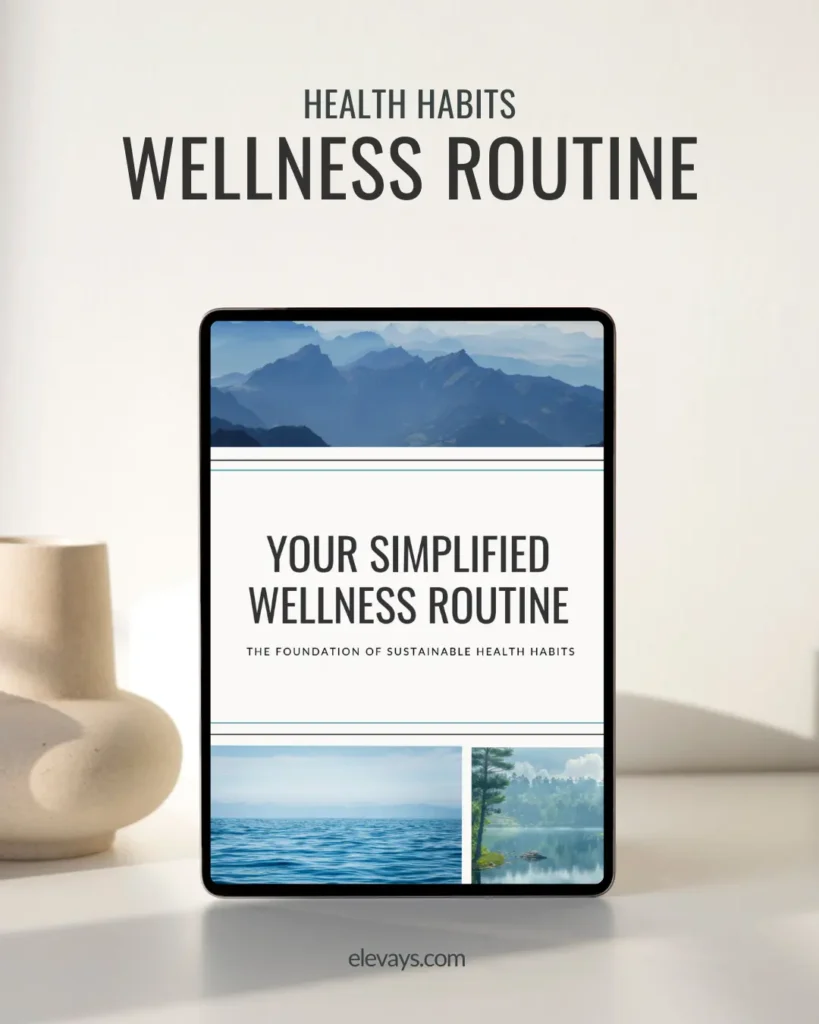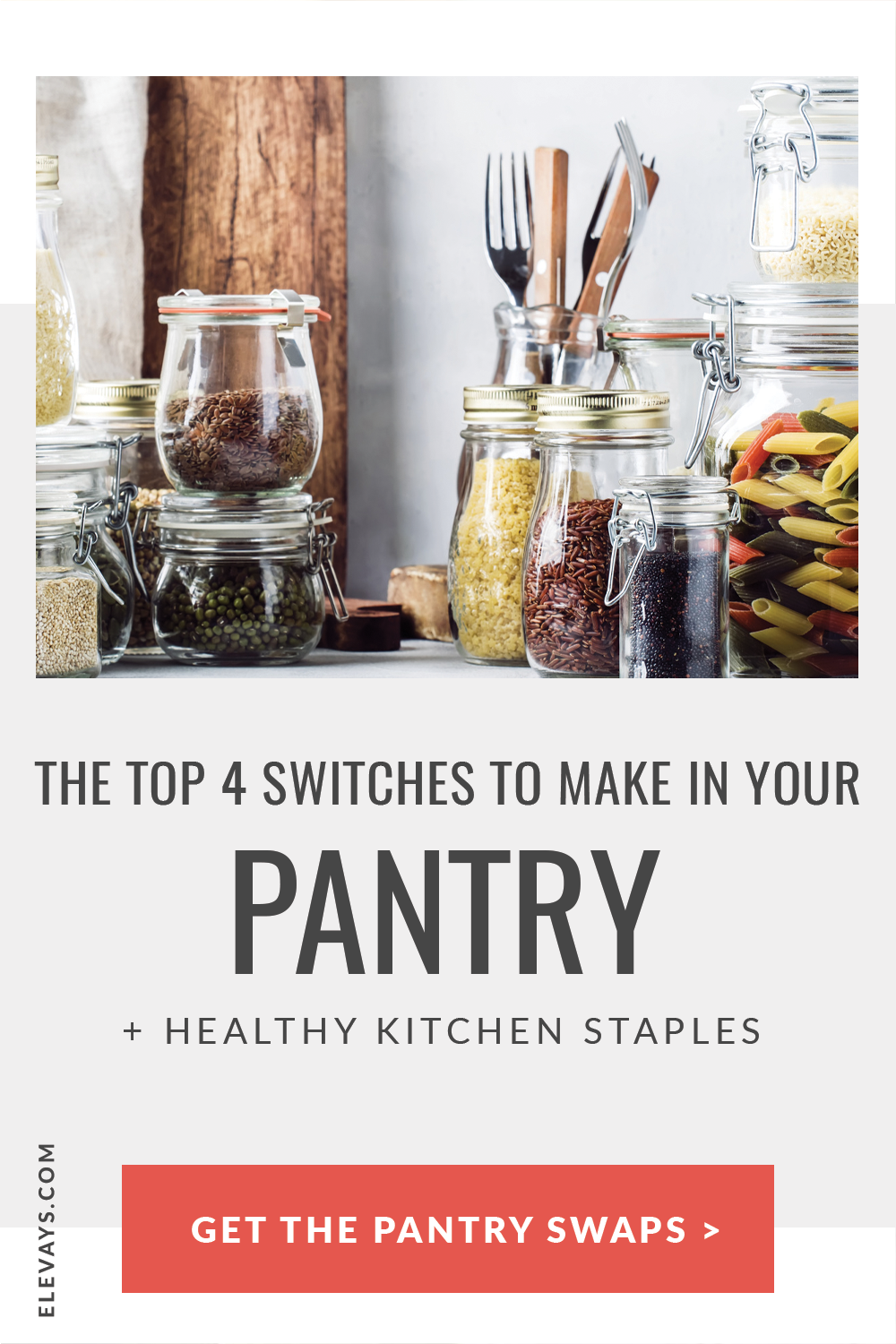Many of us love watching famed Japanese organizer Mari Kondo help people get their homes organized and livable again, but what if you could transform your pantry so that it wasn’t just more organized, but more healthy?
A healthy pantry organization can save money, time, and help your whole family live richer, happier and healthier lives.
TRUTH BOMB:
You’re
Already killing it!
If You Were More Consistent With Your Wellness Routine, You’d Be Unstoppable.
Why Does My Pantry Need a Makeover?
If you take a look at your pantry right now, you’ll probably find that you’re like most Americans: most of your food is packaged in plastic. Whether we’re storing food in Tupperware containers, reaching for cereal packaged in plastic, or grabbing snacks packaged in plastic for our kids–the petroleum byproduct is everywhere. This storage is not only dangerous but also unnecessary. Today, you’re going to learn how to ditch it.
Pantry organization doesn’t have to be a chore–and knowledge is half the battle! Today, I’m going to share with you the hidden dangers lurking inside your pantry and then I’m going to equip you with easy, smart solutions for a pantry organization that makes sense for your family. We’ll talk DIY pantry organization, my favorite pantry organization hacks, and easy, no-nonsense swaps.
The Twin Dangers Lurking Inside Your Pantry
Most of us have two big concerns hiding out in our pantry that can be easily and completely eliminated thanks to a little fresh pantry organization. Those two things most of the time go hand-in-hand, they are plastic and ultra-processed foods. Here’s why they’re hurting you:
1. The Problem With All That Plastic
Like many of us, you probably know that plastic isn’t good for you, it’s just so darn convenient! However, one of the biggest problems with plastic is that it contains phthalates. Phthalates are toxic chemicals used to make plastic more flexible. Phthalates are known to leak into the air and into our food, especially when the plastic container is heated or damaged (1).
The use of phthalates already banned in places, like the European Union. However, their use is still extremely common here in the United States. Every day, it seems, the research against phthalates increases. They’ve been linked to:
- Increased insulin resistance
- Decreased sex hormones in infants
- Female and male infertility
- Hormone disruption
and much more (2)!
Even water bottles and other types of bottles that are made largely with PET are still highly suspect. There’s also a tremendous environmental concern of plastic use-it can take up to a thousand years to degrade but as it does, microparticles enter our water stream, becoming almost impossible to avoid.
It’s not an understatement to say that eliminating plastic from your pantry (and fridge and freezer) can have a significant impact on your family’s health.
Now, let’s take another quick look inside our pantries. This time, we’re looking for processed or ultra-processed foods and, like plastic, we probably won’t have to work too hard to find them.
2. The Dangers of Processed Foods
Processed or ultra-processed foods are foods that have been handled significantly during the production process so that they no longer resemble the original raw ingredients. Because of this, these foods need lots of preservatives and additives to give them flavor and a long shelf life. They’re also usually full of sugar, salt, and lab-made chemicals while lacking the nutrients our bodies need.
At the beginning of 2019, a study published in the JAMA Internal Medicine Journal noted growing evidence that ultra-processed foods are contributing to higher rates of disease. The study’s authors wanted to test the correlation between ultra-processed foods and mortality rates. They studied more than 44,000 French adults older than 45 and found that for every 10% increase in ultra-processed foods, study participants experienced a 14% higher risk of mortality (3).
What are ultra-processed foods? Any food that has been touched, technically, has been processed but we all know there’s a big difference between, say, broccoli that’s been rinsed in water and then frozen for later and potato chips, that have zero resemblance in nutritional makeup, taste, or appearance to the original product (potatoes!).
Americans currently consume huge amounts of ultra-processed foods. One study suggests we get as much as 58% of our daily energy intake from the likes of cereal, soda, frozen dinners, cookies, etc. (4).
There are two main reasons that ultra-processed foods are so dangerous. The first is that they contain huge amounts of sugar, preservatives, and other additives. Take a look at the ingredient list on a loaf of bread–even a whole wheat loaf from a trusted “quality” brand like Sara Lee has ingredients you can’t pronounce, sugar, and fats that have been altered from their natural states.
These ingredients lead to obesity, diabetes, heart disease, and so much more (5). The second reason ultra-processed foods are dangerous is that they’re replacing nutrient-dense food sources in our diets with nutrient-empty foods. We’re not just adding bad-for-us ingredients to our diet, we’re removing the vitamins, minerals, and other life-giving nutrients that we need. Think of what a difference reaching for freshly sliced cucumbers or carrots instead of a bag of chips would make for your overall health!
Processed vs. Ultra-Processed
Conversations like these can always be overwhelming, especially if this is the first time you’re learning about the dangers of processed foods. But I don’t want to alarm you or even shame you–I want to empower you!
Pantry organization doesn’t just mean clearing out the expired stuff; it also means learning to tell the difference between processed and ultra-processed. Frankly, most of us simply don’t have time to make all our food from scratch, but we can make smarter choices about what goes into our pantry, without sacrificing flavor and convenience.
Ditch the Bad Stuff–But Keep the Convenience!
A jar of high-quality marinara sauce, for example, will contain just a few ingredients like organic tomatoes, olive oil, and spices, and is far better tasting and infinitely more nutritional than the more popular brands that are loaded with sugar. And when you keep your pantry stocked with a few essentials, it truly only takes a few minutes to whip up a sauce even your Italian grandmother would approve of!
Here’s another great example: we love to reach for energy bars or breakfast bars because we’re always on the go, but swapping out your ultra-processed, sugar-laden granola bars for a granola you made in bulk from your mason jars of nuts and dried fruits will make a huge difference. Not only will this save you money but it will increase your snack variety and boost health!
Ready for more tips on making easy, healthy swaps as you upgrade your pantry organization?
The Benefits of Making Over Your Pantry
Pantry organization is about more than just keeping your family healthy–it’s also about saving money. When a pantry is organized, there’s no chance of food getting lost on a back shelf and expiring before you get to use it.
You’ll also be buying in bulk, which can help you save big money. And, you’ll be able to plan your weekly grocery shopping trip easily because you’ll know exactly what you have just by glancing into your pantry.
The final benefit of pantry organization is the one I love the most–a great pantry organization includes a shelf or small area for your kids so that they can grab snacks without needing your help. That’s a win for everyone!
My Top 4 Tips for Health Pantry Organization
1. Shop Smarter
Who says you’re limited to the grocery store you’ve always gone to? When you’re trying to swap ultra-processed foods with good-for-you, nutrient-dense foods, the very best place to shop is your local farmer’s market. There, you’ll get access to the freshest, best quality meat and produce.
Plus, you might even be able to connect directly with farmers and ranchers. Some families opt to purchase the meat from a whole steer, for example, and store it in a deep freeze for six months or so until it’s all gone. And your local farm probably has an opportunity for you to become a member and receive a box of produce every week during the spring and summer.
Talk about an exciting way to get the whole family involved in eating healthy! Changing where you shop will change how you shop, and it takes a bit of getting used to, but it will become second nature in no time.
2. Bring Your Own Containers
When you’re trying to get rid of plastic, the bulk aisle in a grocery store or health food store is your best friend. Some stores even allow you to bring in your own jars and bags (you’ll need to get them weighed first before shopping) to collect everything from dried beans to turmeric to nuts.
One of my favorite things to buy in bulk is loose leaf tea. Buying it in bulk usually means you’re getting fresher tea, which means all of its incredible benefits are still intact. Plus, teas can be amazing alternatives to things like traditional pharmaceuticals, helping to strengthen your immune system, boost women’s health, and combat insomnia.
3. Invest in Great Storage
If you’re eliminating plastic from your pantry, you’re going to need some healthier, eco-friendly alternatives. Here are some of my favorites pantry organization containers:
- Mason jars come in everything from tiny sizes to giant gallon storage sizes and are relatively inexpensive. Plus, they last forever and look great on any shelf! You can take them with you to the bulk aisle and even use them to store things like leftovers, fruits, and veggies.
- Pyrex–or any good quality glass container–is another good option for storage. Look for silicone lids.
- Reusable bags for vegetables and shopping are lifesavers! Vejibags are some of my favorites; the organic cotton bags help keep produce fresh longer than plastic bags. Bee’s Wrap also has some fantastic options when it comes to packing things like lunch and finding alternatives to plastic wrap.
- Silicone alternatives are great choices for replacing ziplocs and single-serving plastic snack pouches for your kids. You can find reusable silicone pouches for baby food, yogurt, applesauce, and smoothies, as well as small silicone snack containers to hold handheld snacks like grapes. Stashers is another great alternative to ziplocs.
- Reusable Water Bottles during your pantry organization! Swapping bottled water for reusable bottles is the easiest, greenest move you can make. Not to mention, a great way to track your daily water intake.
4. Make Smart Swaps
Whenever you’re trying to make healthier decisions–even when it comes to pantry organization–it’s easy to fall into the “I can’t have this” mindset. Instead of telling yourself (and your family) “no” about all of your favorite snacks and treats, find healthier, plastic-free alternatives.
This will help all of you reap the benefits of your new pantry organization much faster.
- Nix the vegetable oils altogether (they’re extremely processed) and instead use olive oil, coconut oil, and avocado oil. You won’t notice the difference!
- Blend up some homemade yogurt smoothies featuring naturally sweet strawberries, raw honey, and raw yogurt instead of buying pre-packaged yogurt tubes.
- Make up some non-GMO popcorn with sea salt and coconut oil, popped on the stove instead of the microwave.
- Keep your pantry stocked with nuts like walnuts, cashews, and almonds. A handful of these helps to stave off hunger and they’re filled with tons of great nutrients. Making your own nut butter is another way to save big bucks- and make the best nut butter you’ve ever had.
- There’s no need for refined sugar; instead, stock up on raw honey, real maple syrup, and coconut sugar as delicious, nutritious alternatives.
- If you’re in need of a crunch, stock your pantry with plantain, kale, or cassava chips instead of vegetable oil fried potato chips. Always opt for non-GMO corn tortilla chips. These can be used with everything from guacamole to salsa for that much needed texture.
- Part of the fun of a pantry organization is getting to try new things. Involve your kids in helping to read labels, and try new treats at the store. More and more companies are creating healthier alternatives to junk food we’ve relied on, and it’s fun to try them out! And if something comes in plastic packaging- always recycle!
Pantry organization is one of the best ways to help your family start living healthier and thanks to these tips, I hope you’re inspired and excited to get started! What healthy pantry organization swaps will you make first?
Sources:
- Campaign for Safe Cosmetics (2018). Phthalates. Retrieved from: http://www.safecosmetics.org/get-the-facts/chemicals-of-concern/phthalates/
- Rustagi, N., Pradhan, S.K., & Singh, R. (2011) Public health impact of plastics: An overview. Indian Journal of Occupational & Environmental Medicine, 15(3), 100-103. Abstract: https://www.ncbi.nlm.nih.gov/pmc/articles/PMC3299092/
- Schnabel, L., Kesse-Guyot, E., Alles, B., et al. (2019) Association Between Ultraprocessed Food Consumption and Risk of Mortality Among Middle-aged Adults in France. JAMA Internal Medicine, 179(4), 490-498. Abstract: https://jamanetwork.com/journals/jamainternalmedicine/article-abstract/2723626
- Steele, M., Baraldi, LG., Lousada, M.L., Moubarac, J.C., Mozaffarian, D., & Monteiro, C.A. (2016) Ultra-processed foods and added sugars in the US diet: evidence from a nationally representative cross-sectional study. BMJ Open, 6(3). Abstract: https://www.ncbi.nlm.nih.gov/pubmed/26962035
- Yang, Q., Zhang, Z., Gregg, E.W., Flanders, W.D., Merritt, R., & Hu, F.B. (2014) Added sugar intake and cardiovascular diseases mortality among US adults. JAMA Internal Medicine, 174(4), 516-24. Abstract: https://www.ncbi.nlm.nih.gov/pubmed/24493081







READ the Latest
Health Habits
Health Habits
Longevity
Longevity